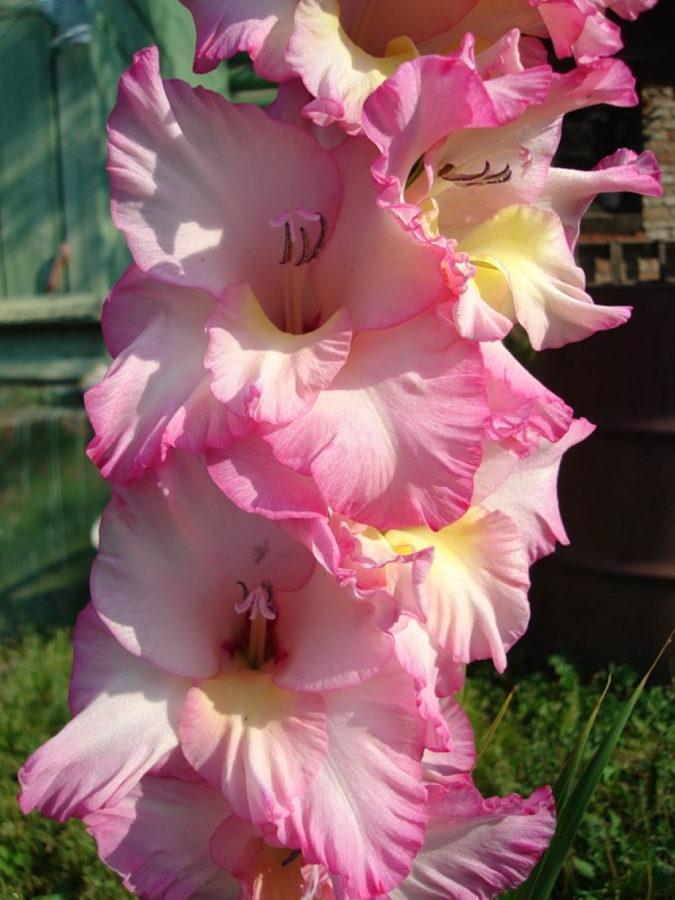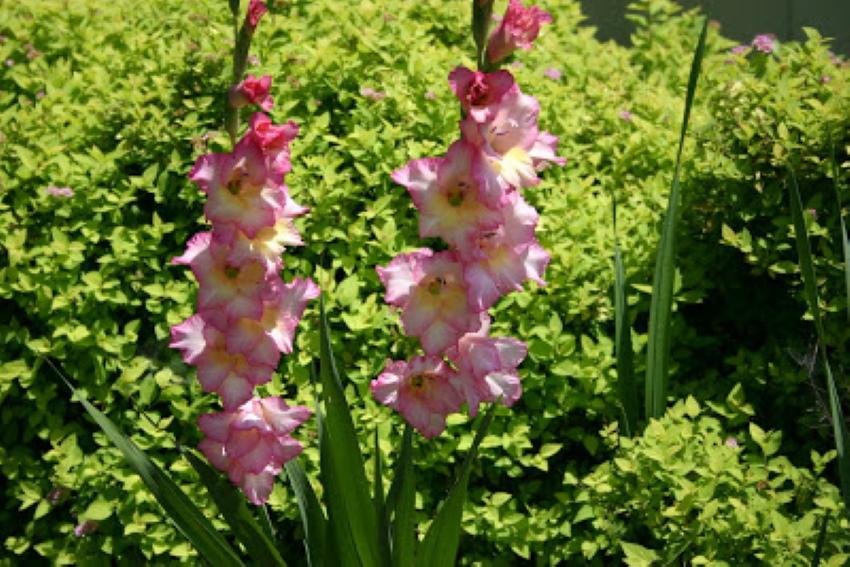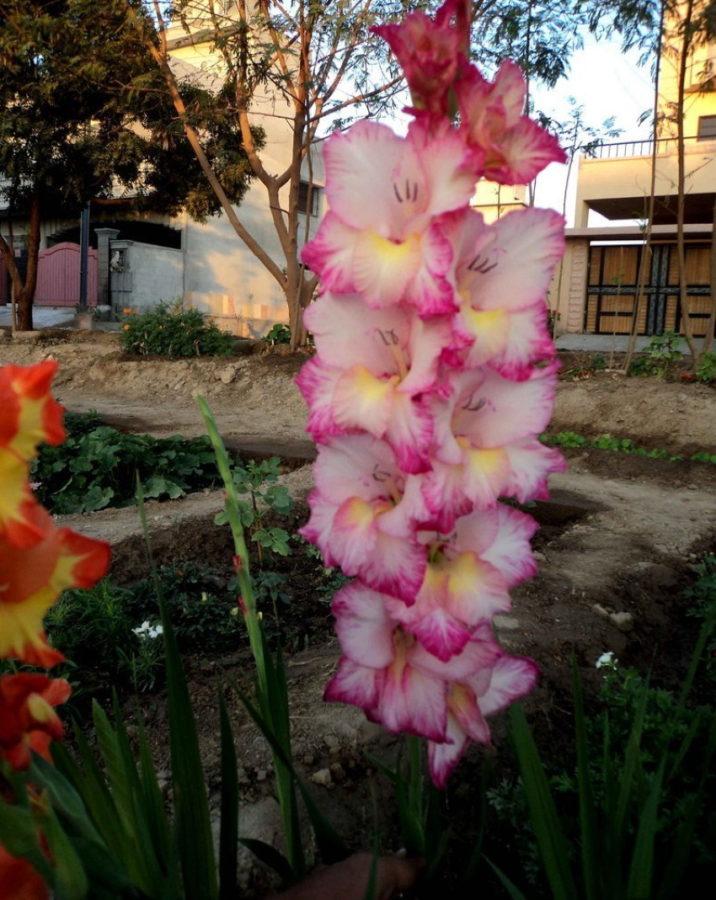Gladiolus Priscilla - delicate charm in large inflorescences
 From the second half of summer, the reign of gladioli begins on flower beds. Their gorgeous inflorescences, with their size and bright color, outshine the neighbors growing nearby. One of the most beautiful and largest varieties is Priscilla gladiolus. Romantic delicate color, large flowers, densely sitting on a peduncle - this is what the plant is famous for. Moreover, a stuffed inflorescence allows you to make a whole bouquet from just one twig.
From the second half of summer, the reign of gladioli begins on flower beds. Their gorgeous inflorescences, with their size and bright color, outshine the neighbors growing nearby. One of the most beautiful and largest varieties is Priscilla gladiolus. Romantic delicate color, large flowers, densely sitting on a peduncle - this is what the plant is famous for. Moreover, a stuffed inflorescence allows you to make a whole bouquet from just one twig.
Gladiolus Priscilla - varietal features

Priscilla has not only large flowers, but also an interesting texture and color. So, the petals feel like velvet, while they have strongly corrugated edges. In the color, white and several shades of pink, from light to deeply dark, are surprisingly combined. So, the center of flowers is snow-white, but the closer to the edge, the more pink prevails in it. Directly the edges of the petals are surrounded by a crimson edging. But in the center of the lower ones, sunny - yellow spots are clearly visible.
The variety is early - medium and blooms 75 days after planting. However, the timing of flowering may shift slightly depending on the climate. The cooler, the later the inflorescences will blossom. In the central strip, gladiolus will bloom no earlier than after 85 days.
Agricultural technology of cultivation
 Like other types of gladioli, Priscilla should be planted in a sunny place. In the shade, the plant is very stretched and cannot show its flowering in all its glory. It is not necessary to deeply deepen the bulb - it is enough for the depth of the hole to be equal to three times the height of the bulb itself.
Like other types of gladioli, Priscilla should be planted in a sunny place. In the shade, the plant is very stretched and cannot show its flowering in all its glory. It is not necessary to deeply deepen the bulb - it is enough for the depth of the hole to be equal to three times the height of the bulb itself.
Considering that the plant itself is quite tall, and the inflorescence is large and heavy, Priscilla should be tied up. The support can be installed while the bulb is being planted to avoid damaging the roots later.
Flower care is simple and consists of the following:
- Watering every 3 days in hot summer and once a week in cool weather.
- Mulching of grown bushes. Layer humus will help prevent rapid evaporation of moisture, and will also serve as a fertilizer.
- Top dressing from spring to August twice a month. In early spring, you can apply nitrogen fertilizers, then replace them with phosphorus - potassium preparations.
- Pruning the stem after flowering to allow the bulb to mature.
- Digging up the bulbs for storage in September.